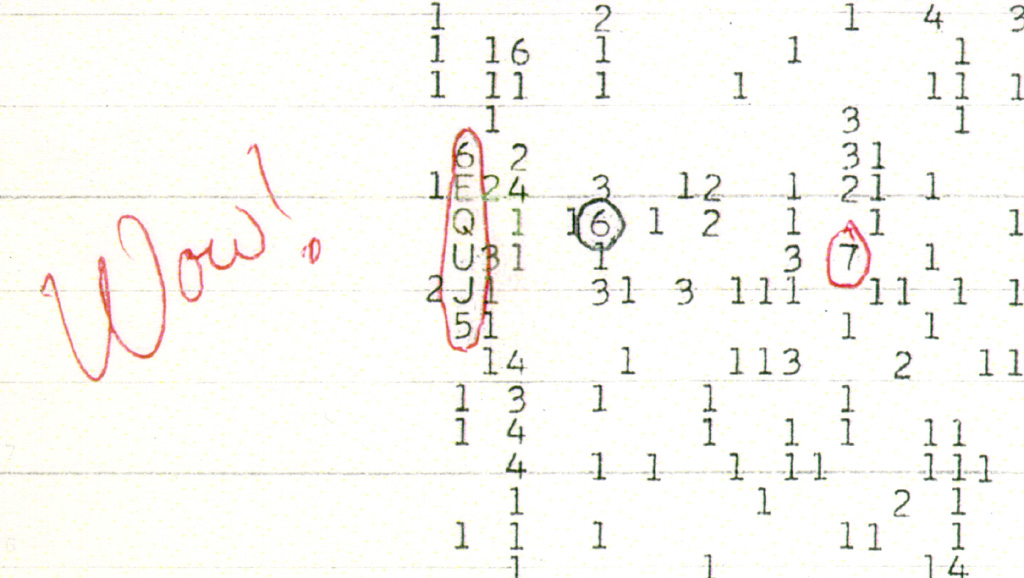Support SETI@home, the First and Perhaps the Most Important Crowd Computing Project

 SETI@home , started in 1999, is one of the first crowd-source citizen science project. This citizen science endeavor is dedicated to finding candidate signals from alien intelligences, which is a project with a really huge potential payoff if successful. You can now support the project with a Bitcoin donation.
SETI@home , started in 1999, is one of the first crowd-source citizen science project. This citizen science endeavor is dedicated to finding candidate signals from alien intelligences, which is a project with a really huge potential payoff if successful. You can now support the project with a Bitcoin donation.
SETI@home searches for possible evidence of radio transmissions from extraterrestrial intelligence using observational data from the Arecibo radio telescope. The data are taken while the telescope is used for other scientific programs, then sent to the SETI@home facility. The data are then parsed into small chunks in frequency and time, and analyzed by volunteers to search for candidate signals that could encode messages from other civilizations. The SETI@home system sends millions of chunks of data (“work units”) to the participants, to be analyzed by their home computers. The SETI@home software processes the date on the participants’ computers in the idle times used by screensavers, and sends the analysis results back.
The first version of SETI@home was based on ad-hoc software, but later versions have been ported to the BOINC (Berkeley Open Infrastructure for Network Computing) platform.
The Wow! Signal Had Many Features to Indicate a Possible Alien Origin
Among the many possible, unexpected “our of the blue” scientific discoveries, a message sent from an alien civilization could have a really unique positive impact on our world. The famous 72-seconds “Wow! Signal” received in 1977 by the Big Ear radio telescope had many features to indicate a possible alien origin, but it hasn’t been detected again. SETi@home participants are motivated by the hope to find another “Wow! Signal” that could change our views of the universe forever, showing that our civilization is not alone.

The SETi@home project receives some public funding, but it mostly relies on donations from the public. The project has had chronic funding problems in the last few years, and at this moment it’s out of work units to send to participants. A SETI@home fundraiser at Bitcoin Utopia is collecting Bitcoin donations to support the project. I just made a donation, and I think that, among the many worthy causes that can be supported with Bitcoin donations, this is one of the most underfunded and deserving. It’s impossible to estimate the probability of success, but it’s certain that the confirmation of the alien origin of another Wow! Signal found by SETI@home participants would be one of the most spectacular – and important – scientific discoveries that we can imagine.
Distributed volunteer computing is, of course, the platform upon which Bitcoin itself stands. It can be argued that the fundamental innovation of Bitcoin in crowdsourced computing has been the introduction of a built-in, sustainable reward system. With the reward system, the Bitcoin network has grown much more than all scientific distributed computing efforts, and now the overall computing power of the Bitcoin network is much higher than the combined computing power of the 500 most powerful supercomputers on the planet. Two ambitious projects, Gridcoin and FoldingCoin, want to harness the huge computing power and the incentive system of the Bitcoin network to support science. The Gridcoin project supports all BOINC applications, and therefore it directly supports SETI@home, and the FoldingCoin project could establish a Bitcoin 2.0 platform to support crowdsourced citizen science including SETI@home.
Do you support SETI@home? Do you think the project could be integrated with the blockchain, and how? Comment below!
Images from SETI@home, Wikimedia Commons and Shutterstock.